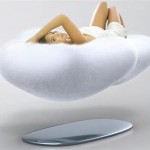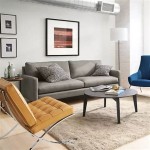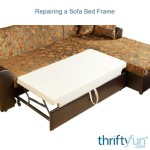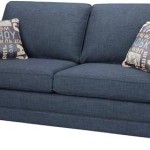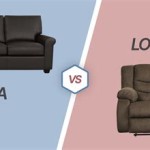Memory Foam Sofa Bed Mattresses: Comfort, Support, and Practicality
Memory foam sofa bed mattresses represent a convergence of comfort and utility, providing a sleeping solution within the constraints of a sofa bed frame. These mattresses are designed to offer a comfortable and supportive sleep surface while being able to fold and unfold efficiently within the mechanism of a sofa bed. Understanding the composition, features, and considerations involved in selecting a memory foam sofa bed mattress is crucial for ensuring both comfort and longevity.
The core characteristic of a memory foam mattress, be it for a traditional bed or a sofa bed, is its viscoelastic properties. This allows the material to conform to the body's shape, distributing weight evenly and relieving pressure points. The "memory" aspect refers to the material's ability to slowly return to its original shape after pressure is removed. This contouring effect contributes to a feeling of being cradled, promoting restful sleep. However, the unique challenges of sofa bed design necessitate specific adaptations in the construction and materials used in memory foam sofa bed mattresses.
Understanding Memory Foam Composition and Density
Memory foam is primarily composed of polyurethane, with added chemicals to increase its density and viscosity. Different manufacturing processes and chemical formulations result in varying densities, which significantly impact the mattress's feel, support, and durability. Density is typically measured in pounds per cubic foot (PCF). Higher-density memory foam (5 PCF or higher) tends to be more supportive, durable, and resistant to compression over time. Lower-density memory foam (3 PCF or lower) is softer and allows for more immediate contouring, but it may not provide sufficient support for all sleepers and is more prone to sagging.
For sofa bed mattresses, the foam density is particularly important. The limited thickness of these mattresses means that the density must compensate for the lack of overall volume. A higher density foam in a thinner profile can still provide adequate support, whereas a low-density foam in the same thin profile would likely bottom out, leading to discomfort and compromised spinal alignment. Furthermore, the folding and unfolding action of a sofa bed places stress on the foam, making durability a key consideration. Higher density foams are generally more resilient and able to withstand repeated folding and unfolding.
In addition to the primary memory foam layer, many memory foam sofa bed mattresses incorporate a base layer of high-density support foam. This base layer provides structural integrity and prevents the sleeper from feeling the underlying sofa bed frame. The combination of a memory foam comfort layer and a high-density support layer aims to balance comfort and support, creating a sleeping surface that is both conforming and stable. The specific ratio of memory foam to support foam will influence the overall feel and performance of the mattress.
Gel-infused memory foam is another common variation. Gel particles are incorporated into the memory foam to improve temperature regulation. Memory foam, by nature, can retain heat, which can lead to discomfort for some sleepers. Gel infusion helps to dissipate heat, creating a cooler sleeping surface. This is especially beneficial in warmer climates or for individuals who tend to sleep hot. The effectiveness of gel infusion varies depending on the concentration of gel particles and the specific manufacturing process.
Key Features to Consider in a Memory Foam Sofa Bed Mattress
Beyond the foam composition and density, several other features contribute to the overall quality and suitability of a memory foam sofa bed mattress. These features include thickness, size, folding capability, cover material, and certifications.
Thickness: Sofa bed mattresses are inherently thinner than standard mattresses to accommodate the folding mechanism of the sofa bed frame. Typical thicknesses range from 4 to 6 inches. A thicker mattress generally provides more cushioning and support, but it must still be thin enough to fold properly within the frame. Carefully consider the specifications of the sofa bed frame to ensure that the chosen mattress thickness is compatible. In some cases, exceeding the recommended thickness can damage the folding mechanism or prevent the sofa bed from closing completely.
Size: Sofa bed mattresses come in various sizes, corresponding to the size of the sofa bed frame. Common sizes include twin, full, and queen. Accurate measurement of the existing mattress or the sofa bed frame's internal dimensions is crucial to ensure a proper fit. An ill-fitting mattress can be uncomfortable and may also damage the sofa bed mechanism.
Folding Capability: The key differentiating factor between a standard mattress and a sofa bed mattress is the ability to fold. The mattress must be designed and constructed in a way that allows it to bend and flex without compromising its structural integrity or comfort. Many memory foam sofa bed mattresses are segmented or hinged to facilitate folding. These segments must be strategically placed and constructed to avoid creating pressure points or uncomfortable gaps when the mattress is unfolded for sleeping. The flexibility and resilience of the foam material are also crucial for ensuring that the mattress returns to its original shape after being unfolded.
Cover Material: The cover material plays a significant role in the overall comfort and breathability of the mattress. Common cover materials include cotton, polyester, and blends of these fibers. Cotton is a natural fiber known for its breathability and softness. Polyester is a synthetic fiber that is durable and resistant to wrinkles and shrinking. Some covers are treated with antimicrobial or hypoallergenic finishes to enhance their cleanliness and suitability for sensitive individuals. The cover should also be durable enough to withstand the repeated folding and unfolding of the sofa bed mechanism.
Certifications: Certifications from organizations like CertiPUR-US indicate that the foam has been tested and certified to meet specific standards for content, emissions, and durability. These certifications provide assurance that the foam is free from harmful chemicals and meets certain performance criteria. Looking for mattresses with relevant certifications can help ensure that you are purchasing a safe and high-quality product.
Factors Influencing Comfort and Support Levels
The comfort and support provided by a memory foam sofa bed mattress are subjective and depend on individual preferences and sleeping habits. However, several key factors influence these qualities.
Sleeper Weight: The weight of the sleeper is a primary determinant of the required support level. Heavier individuals generally require denser and thicker mattresses to prevent bottoming out and maintain proper spinal alignment. Lighter individuals may find a softer mattress to be more comfortable, as it allows for greater contouring and pressure relief.
Sleeping Position: Different sleeping positions place different demands on the mattress. Side sleepers typically require a softer mattress that conforms to the curves of the body and relieves pressure on the shoulders and hips. Back sleepers need a firmer mattress that provides adequate support for the spine. Stomach sleepers generally require the firmest mattresses to prevent the hips from sinking and causing lower back pain.
Firmness Level: Mattress firmness is typically rated on a scale from 1 to 10, with 1 being the softest and 10 being the firmest. The ideal firmness level depends on individual preferences and sleeping habits. Most people find a medium-firm mattress (around a 6 or 7 on the firmness scale) to be a good compromise between comfort and support. However, individuals with specific needs or preferences may prefer a softer or firmer mattress.
Underlying Support System: The quality and construction of the sofa bed frame itself also contribute to the overall comfort of the mattress. A sprung base or a platform base will offer different levels of support. A sagging or uneven sofa bed frame will detract from the performance of even the best memory foam mattress. Ensure that the sofa bed frame is in good condition and provides adequate support before investing in a new mattress.
In conclusion, selecting a memory foam sofa bed mattress involves careful consideration of various factors, including foam composition, density, thickness, size, folding capability, cover material, and certifications. Understanding these factors and their influence on comfort and support levels will help you choose a mattress that meets your specific needs and preferences. Remember to prioritize durability and compatibility with the sofa bed frame to ensure long-lasting performance and a comfortable sleeping experience.

Replacement Sofa Bed Memory Foam Mattress Medium Feel

Sofa Bed Mattress Memory Foam Plushbeds

Custom Deluxe Coolmax Sofa Bed Mattress With Memory Foam

Cool Gel 4 5 Memory Foam Sofa Bed Mattress Queen Com

Sleeper Sofa Mattress Replacement Cool Gel Memory Foam For Bunk Bed Rv Boat

60 X 72 Sofa Bed Mattress Memory Foam

Sofa Mattresses You Can Sleep On Best Bed

Milliard 4 5 Inch Memory Foam Replacement Mattress For Queen Size Sleeper Sofa Bed And Couch Beds Not Included Com

60 X 72 Sofa Bed Mattress Memory Foam

Cool Gel Classic Queen Size 4 5 In Foam Sofa Bed Mattress 414801 1152 The Home Depot

